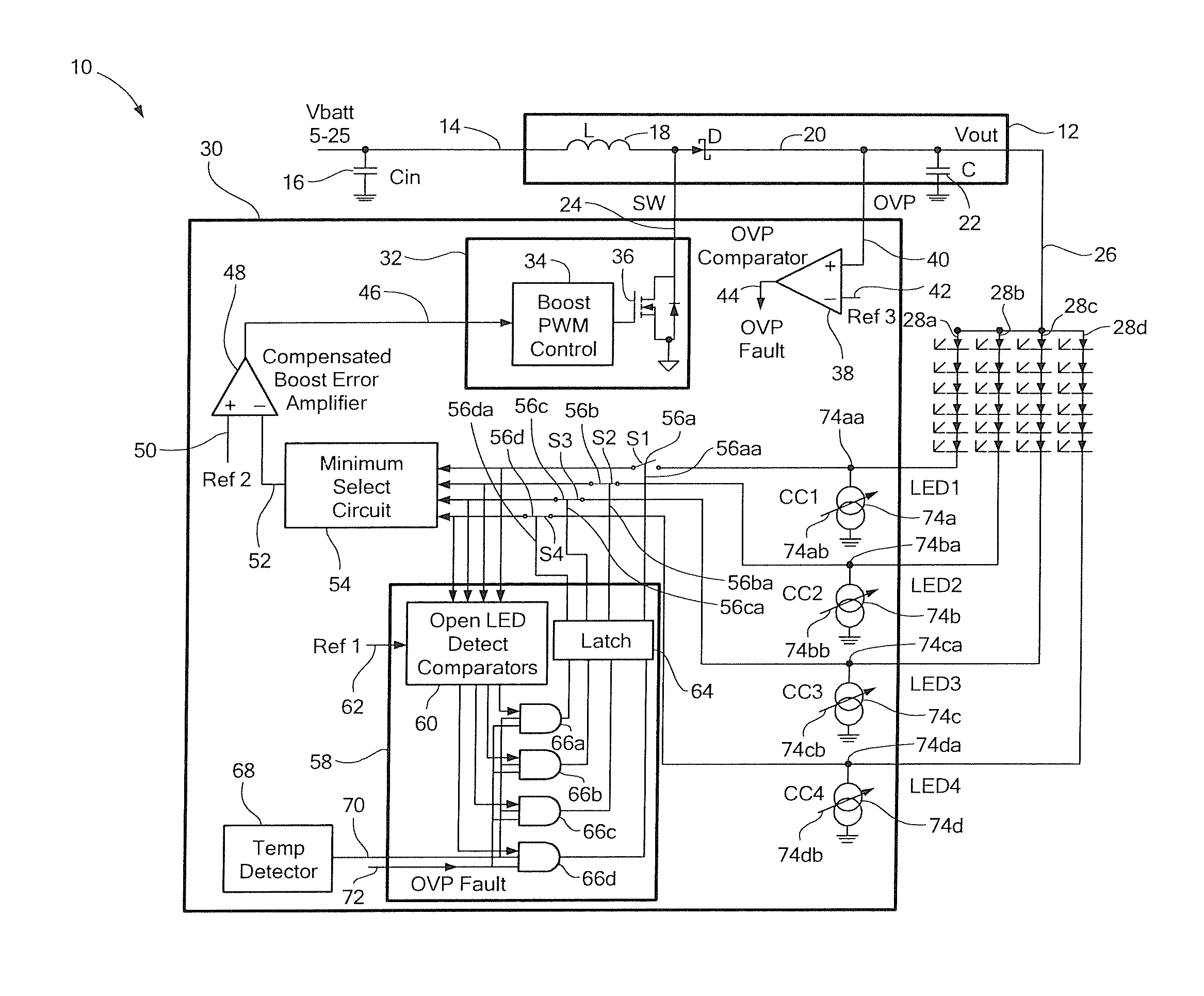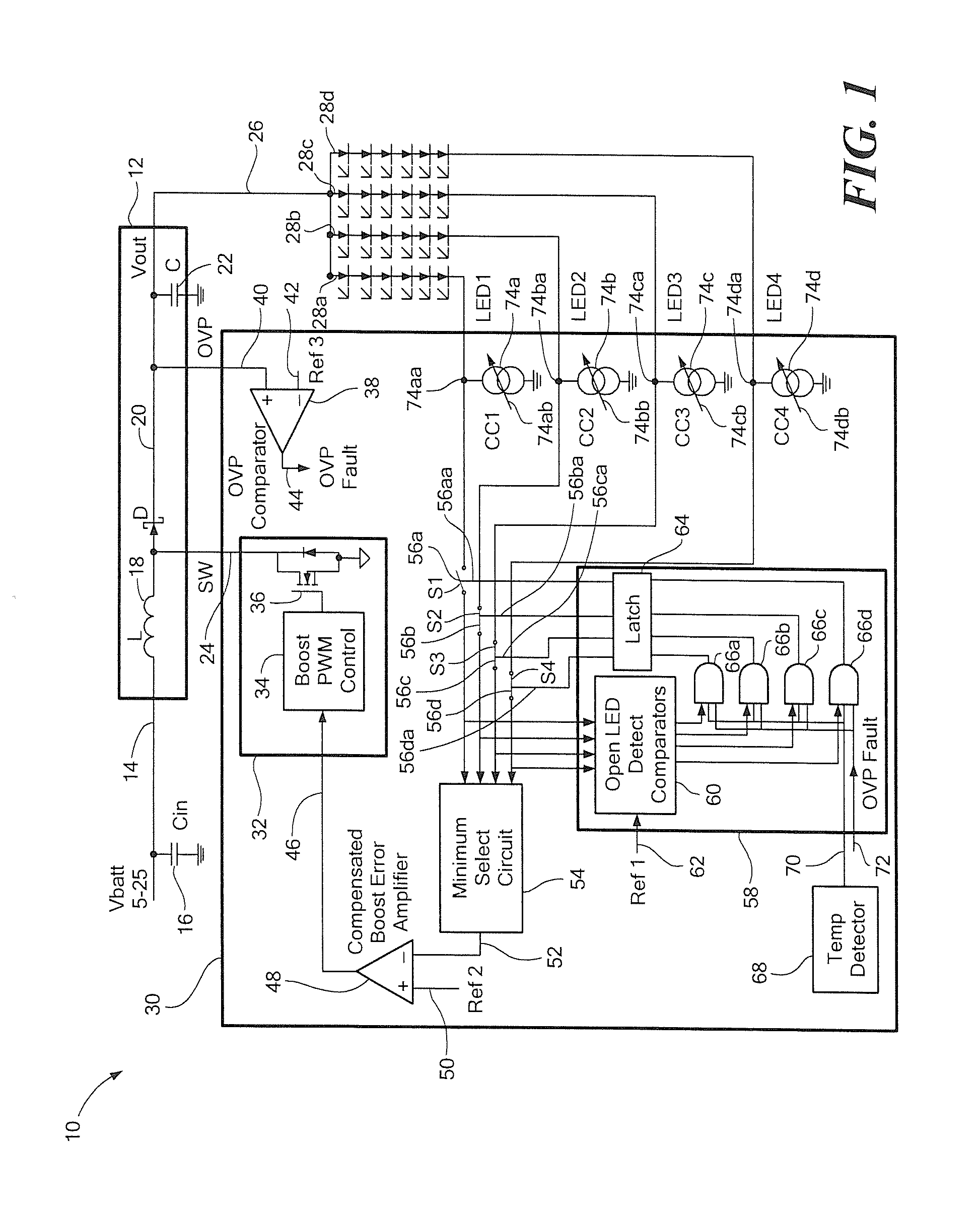Electronic circuit for driving a diode load
a technology of electronic circuits and diodes, applied in the direction of electric variable regulation, process and machine control, instruments, etc., can solve the problems of reducing power dissipation, unnecessarily high power dissipation of boost switching regulators, and above-described electronic techniques can also suffer high power dissipation, so as to achieve rapid stabilization of the control loop of the boost switching regulators. , the effect of audible nois
- Summary
- Abstract
- Description
- Claims
- Application Information
AI Technical Summary
Benefits of technology
Problems solved by technology
Method used
Image
Examples
Embodiment Construction
[0025]Before describing the present invention, some introductory concepts and terminology are explained. As used herein, the term “boost switching regulator” is used to describe a known type of switching regulator that provides an output voltage higher than an input voltage to the boost switching regulator. While a certain particular circuit topology of boost switching regulator is shown herein, it should be understood that a boost switching regulator can be formed in a variety of circuit configurations.
[0026]As used herein, the term “current regulator” is used to describe a circuit or a circuit component that can regulate a current passing through the circuit or circuit component to a predetermined, i.e., regulated, current. A current regulator can be a “current sink,” which can input a current, or a “current source,” which can output a regulated current. A current regulator has a “current node” at which a current is output in the case of a current source, or at which a current is ...
PUM
 Login to View More
Login to View More Abstract
Description
Claims
Application Information
 Login to View More
Login to View More - R&D
- Intellectual Property
- Life Sciences
- Materials
- Tech Scout
- Unparalleled Data Quality
- Higher Quality Content
- 60% Fewer Hallucinations
Browse by: Latest US Patents, China's latest patents, Technical Efficacy Thesaurus, Application Domain, Technology Topic, Popular Technical Reports.
© 2025 PatSnap. All rights reserved.Legal|Privacy policy|Modern Slavery Act Transparency Statement|Sitemap|About US| Contact US: help@patsnap.com



